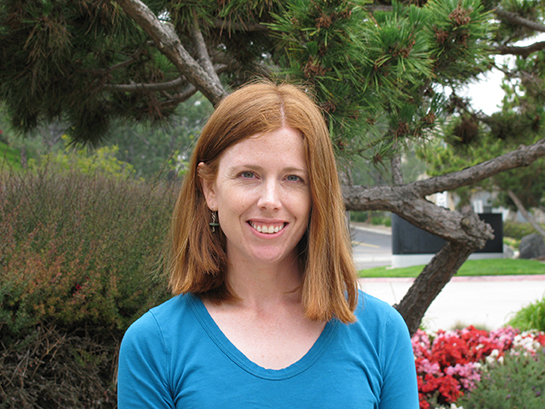Meredith Wright on the Front Lines of a Long Battle

By: Cynthia Adams | Photos by: Nancy Evelyn
Can we overcome the growing problem of antibiotic resistance?
The magazine Scientific American published a brief news item in February 2012 about the bad news concerning antibiotic resistance. The subhead shot straight to the crux, calling antibiotic-resistance bacteria an outright crisis. The bacteria had overrun “last defenses,” and Scientific American asked: “can we stop them?” If you wanted a primer on antibiotic resistance—its reach, its frightening repercussions—the venerable publication spelled it out, in language that included the words “last resort.” “Anytime you hear that a particular bacterium has become resistant to a ‘drug of last resort,’ that is bad. Drugs of last resort—such as vancomycin for Staphylococcus infections—are usually the last line of safe, dependable defense for certain kinds of infections. Drug companies can try to come up with new medications to replace the outpaced meds, but that takes time and does not bring in a lot of money, so we are fast running out of drugs of last resort.” UGA alum and researcher Meredith Wright is working on the front lines to fight back.
Meredith Wright, (PhD 2007), is a capable recruit in the war on germs. Wright works directly with issues related to the evolution of antibiotic-resistant bacteria, which medical authorities report is a matter of urgent, even international, concern.
She currently researches Acinetobacter baumannii, a bacterium associated with hospital-acquired infections that is increasingly drug resistant, at the J. Craig Venter Institute, a nonprofit research organization based in La Jolla, Calif. and Rockville, Md.
The Institute has some formidable resources. It was created in 2006 with the mergers of the Center for the Advancement of Genomics, the Institute for Genomic Research, the Institute for Biological Energy Alternatives, and the J. Craig Venter Science Foundation Joint Technology Center. The Institute conducts research using a variety of “-omic” approaches on areas such as genomic medicine, environmental genomic analysis, and synthetic biology. Among Wright’s colleagues is the Nobel laureate, Hamilton Smith, who was also part of the team that sequenced the first bacterial genome, Haemophilus influenzae in 1995, through a JCVI predecessor organization, the Institute for Genomic Research (TIGR).

Q: How did you happen to attend UGA and become involved with antibiotic resistance?
A: The ecology program at UGA is one of the top in the nation, so that was a draw. And, I was attracted to the research project that I was going to be involved with.
I basically stumbled into studying antibiotic resistance. I started my graduate studies at Colorado State University, studying the microbial role in the food web of tropical headwater streams as a stream ecologist. Then after completing my master’s there, I decided that I wanted to pursue a PhD. I looked for projects combining my interests in microbiology and stream ecology. The PhD project at UGA looking at antibiotic resistance in streams at the Savannah River Site was an ideal fit.
My dissertation adviser, J Vaun McArthur, and his collaborators, noticed higher levels of antibiotic resistance in metal contaminated streams at the Savannah River Site (SRS) compared to uncontaminated streams on the SRS. We looked at what genetic mechanisms were involved in this co-selection process, and identified potential environmental reservoirs for antibiotic resistance.
Q: What did you find?
A: One thing my dissertation research looked at was the abundance and diversity of different genetic elements involved in spreading antibiotic resistance and metal resistance among environmental bacteria. There are these mobile genetic elements, called class one integrons, which I found to be more abundant in the metal-contaminated sites that I studied. Integrons, along with other genetic elements like plasmids and transposons, can move chunks of DNA around between bacteria and class 1 integrons, and are often associated with moving antibiotic resistance genes between pathogenic bacteria.
These elements allow bacteria to capture new genes that are potentially adaptive.
There are a few hypotheses as to why antibiotic resistance would be more prevalent in metal-exposed bacteria. The one with the most evidence to date is that you can have a gene that encodes for a metal resistance protein, physically linked to a different gene that codes for antibiotic resistance on the same genetic element like a plasmid, so that when you select for one trait, you indirectly select for the other. Another interesting finding is that we found antibiotic resistance genes in environmental bacteria that are also found in clinical bacteria—suggesting that gene flow is happening between clinical and environmental settings.
Q: What drew you to your current research at the J. Craig Venter Institute?
A: Since graduating from UGA, I’ve been involved in a few different research projects on diverse topics in microbiology— ranging from studying groundwater biogeochemistry, to host-pathogen associations in a food-borne pathogen. These experiences helped me realize that I am really interested in understanding the genomic basis for bacterial evolution. The last decade has seen a tremendous change in how microbiologists work, due to advances in genome technology. For example, during my dissertation research, it was a big deal to get one bacteria sequenced. Now, I’m looking at 50 bacterial genomes, and still counting, in my current project at JCVI. With this increase in sequencing capabilities comes a huge demand for increased computational capabilities to make sense of all the data that is generated. Thus, one of the reasons I was drawn to the project at JCVI was for the opportunity to develop my bioinformatic skills while addressing a very important topic like the spread of antibiotic resistance in A. baumannii.
Q: Can you describe what you do at the J. Craig Venter Institute in layman terms?
A: In a nutshell: The organism I am studying now, Acinetobacter baumannii, is a hospital-acquired pathogen, meaning people enter the hospital for other reasons and while they are there, become infected with this organism—through respirators, or catheters, or open wounds, for example. In the last decade or so, this organism has become increasingly antibiotic-resistant due to its exposure to antibiotics in hospital patients. We are studying how this organism evolves by comparing the genomes of closely related strains isolated from the same hospital over the course of a few years.
Q: Have you met (founder) Hamilton Smith? Or other Nobel Laureates?
A: Yes, I run into him in the break room frequently. I once ended up sitting next to him during a training seminar on how to properly fill out timesheets, and it struck me as funny that even Nobel laureates have to sit through mandatory HR training sessions. We recently held a celebration at work for his 83rd birthday. It’s amazing to work with someone who is still so motivated by his research.
Q: If there is little incentive, profit-wise, to develop new antibiotics, what might the future hold? Is there a new generation drug on the horizon?
A: Microbiologists are utilizing new “-omic” tools like genomics and proteomics to better understand the interaction between pathogenic and commensal bacteria, and between pathogens and our immune system to identify new drug targets and design new classes of drugs. Our battle to develop new weapons with which to fight pathogenic bacteria will be ongoing given the remarkable capability of bacteria to evolve. One promising idea is to use “good” bacteria to keep “bad” bacteria in check. For example, there has been strong clinical evidence that fecal transplants from healthy donors can be used to eradicate difficult-to-treat Clostridium difficile infections. Though this idea admittedly falls into the gross category, and as squeamish as it might make you, the idea is to use the innate ability of our “good” gut bacteria to create an inhospitable environment for pathogens. There is still a lot of research that needs to be done for us to understand what constitutes “good” bacteria and what mechanisms they employ to create an inhospitable environment for “bad” bacteria, and how they interact with our immune system. However, I think this area of research will yield promising tools to fight infections in the future.
Q: What reading matter is on your bedside table?
A: After spending the day at work and then taking care of my family in the evening, I like to keep my pre-bedtime reading pretty light right now. I read a few different magazines, like The Sun and Sports Illustrated, and typically have a novel or two going also.

RECONSIDER AND REVISIT VACCINATIONS: THEY SAVE LIVES
Comebacks are great for film and rock stars, but not for infectious diseases.
Vaccines have nearly eliminated diseases such as smallpox—but diseases thought to no longer represent a threat have reappeared. Measles swept France in recent years. As of the summer of 2012, meningitis was making boldface headlines in the United States. Whooping cough has returned at epidemic levels, warns Seth Mnookin, a science writer. And today, tuberculosis (or TB) is no longer relegated to a Victorian novel. The World Health Organization reports that as much as 30 percent of the world population may be infected with TB bacteria—and advises that no country has ever succeeded in completely eliminating the disease. The virulent TB strain of the present remains stubbornly resistant to multiple drugs.
Sometimes it’s good to follow the herd. The “herd immunity” term is one to know: herd immunity means how many in a population are required to safely prevent the spread of disease. The necessary number is startlingly high—anywhere from 85-95 percent. That percentage of the population needs to be vaccinated in order to protect against dangerous disease and widespread contagion.
THE PROBLEM OF AMR
The Centers for Disease Control remind us that, while antibiotic drugs changed the face of infectious disease for decades, they are no longer as successful. Overprescribed and incorrectly taken, antibiotics are no longer effective against such infections as strep throat, gonorrhea, and pneumonia.
Making matters worse, there are few alternatives on the horizon. It is not particularly cost-effective for drug manufacturers to pursue new antibiotics.
Fewer and fewer drugs remain in the physician’s arsenal of effective weapons to rely upon when an antibiotic-resistant infection strikes.
Antibiotics, and antimicrobial resistance antibiotics, are commonly known as antimicrobial agents. They are also, since 1940, commonly prescribed. For decades, these drugs were the first-line of defense against infectious disease. Yet antimicrobial’s benefits have been steadily eroded by both over-use and the infectious organisms own adaptation—antimicrobials are simply less effective in killing off the very organisms they were designed to destroy.
As the organisms developed antibiotic resistance, this phenomenon became known as AMR. Reports indicate that even second-line drugs are also becoming antibiotic resistant. It is a domestic and international problem that is at crisis level in some countries.
According to the World Health Organization:
- About 440,000 new cases of multidrug-resistant tuberculosis (MDR-TB) emerge annually, causing at least 150,000 deaths.
- Resistance to earlier generation antimalarial medicines such as chloroquine and sulfadoxine-pyrimethamine is widespread in most malaria-endemic countries.
- A high percentage of hospital-acquired infections are caused by highly resistant bacteria such as methicillinresistant Staphylococcus aureus (MRSA).
- Inappropriate and irrational use of antimicrobial medicines provides favorable conditions for resistant microorganisms to emerge, spread and persist.
What is the outcome?
Those who become infected with AMR organisms not only will have much longer hospital stays, but also, the likelihood of death is greater. Also, hospital acquired infections raise another host of problems. Many insiders are loathe to comment—the issue of patient infection rates has hospitals scrambling to contain the problem, particularly when infections no longer respond as normal to the old arsenal of drugs.

Hospital Infections
If you cannot easily stop an infection once acquired, it stands to reason that prevention is more vital than ever. But hospitals are deeply worried. A veteran hospital administrator, speaking anonymously, observes, “As in most things, healthcare prevention is preferable to treatment of a hospital-acquired infection.” The problem is containment of infection spreading like a wildfire from one patient to the next.
To the East, AMR problems have escalated
In India, where antibiotics are readily available over-the-counter, antibiotic resistance is widespread. In a 2012 Nature magazine interview, an oncologist at the Tata Memorial Centre in Mumbai illustrates the problem. Kumar Prabhash relates a frightening story about hospital infections.
More than half of infected patients sampled at the medical center where Prabhas works, suffered infections also resistant to the class of antibiotics known as carbapenems. Carbapenems are a “second line” drug used in the treatment of infections that are known to be resistant. The oncologist reported that as recently as a few years ago, only about 30 percent of the samples were resistant. Now, the number is greater than 50 percent.
“That is really scary for us,” reports Prabash.
In August of 2012, India convened its first medical society meeting on antibiotic resistance. Indian clinicians are campaigning to curb misuse.
Think you’re safe because you carefully limit taking antibiotics?
You may be ingesting antibiotics unawares. The problem of overuse extends to nearly everyone, even those who judiciously eschew antibiotic over-exposure. Its overuse is seen in livestock and poultry producers who use them not only to prevent infection but to stimulate growth. (According to Scientific American, poultry farmers who stop preventative antibiotic usage see a rapid drop in antibiotic resistance.) In addition, antibiotic is detected in many municipal water supplies, affecting at least 41 million Americans.
Antibiotics and a wide range of drugs are detectable in the drinking water of 25 of 28 tested municipal water supplies.
This year, the Associated Press contacted 62 water providers for an investigative article published September, 2012. The AP reported that only 28 of those providers actually screen for drug contaminants. Of the 28, only three had water supplies free of pharmaceuticals. Only one of the three, Virginia Beach, Va., was on the East Coast. (Austin, Texas and Albuquerque, N.M. were the other two cited for clean water.)
How to avert disaster? Avoid infection.
According to Director David Thomas, a physician with the Johns Hopkins Division of Infectious Disease, a few steps may make very big differences. He makes these suggestions in a recent publication:
- Strongly consider a flu vaccination.
- Given that bugs prefer a moist, warm environment, consider wiping down all equipment before use. (This includes gym equipment, shared computer equipment and even items such as remote controls.)
- Cuts are susceptible to infections. Even minor ones can provide an opening for staph infections. If you have a cut, take all precautions to clean it and then monitor it for signs of infection.
- Tattoo equipment must be sterilized. Do not consider getting a tattoo anywhere—at home or abroad—without guarantees the equipment used is sterile.








